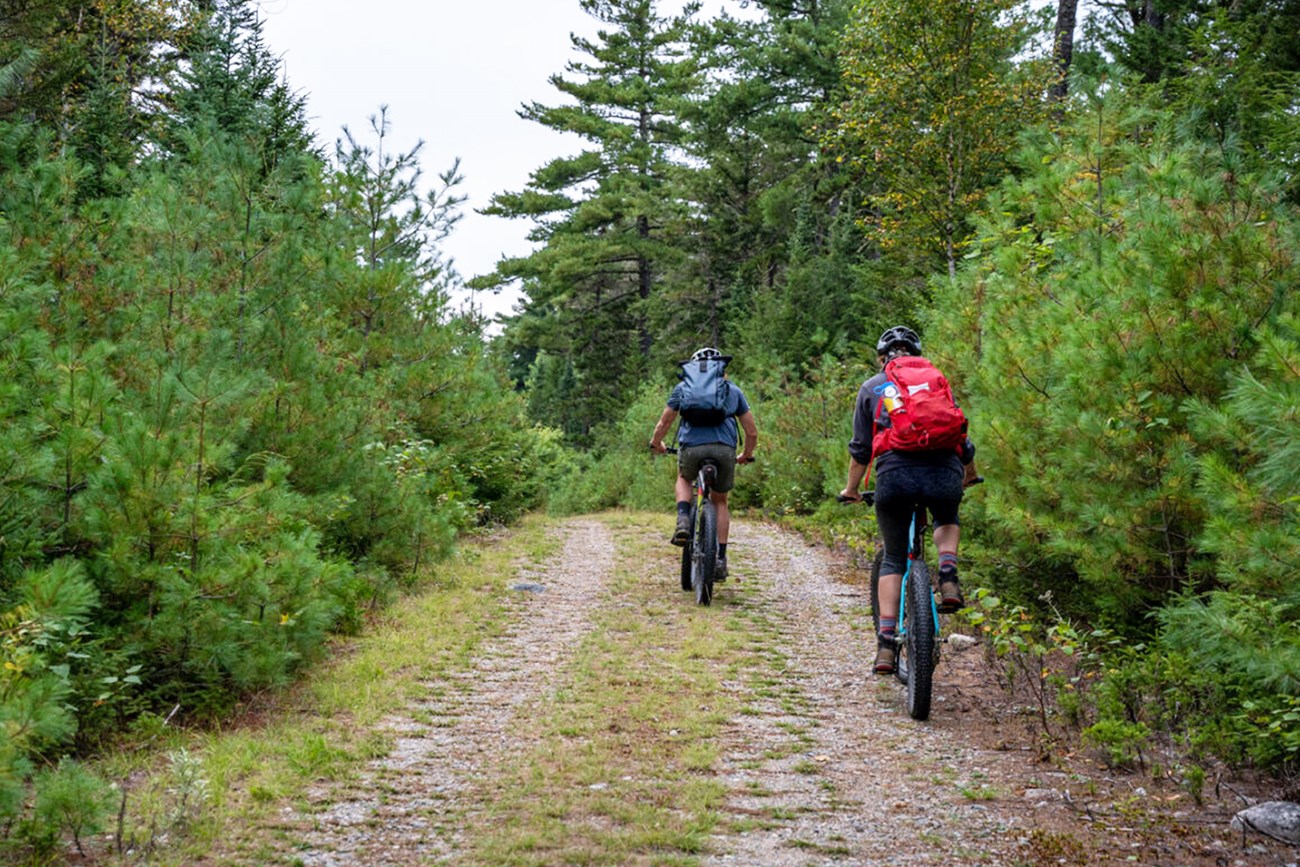
NPS Photo / Gin Majka Biking is an exciting way to see the diverse ecology within the monument. An abundance of former logging roads makes for a close and personal experience with the landscape whether it be a technical trail in the forest or a casual ride to spend the night at a remote campsite. When preparing for your trip, note that there are no paved roads and no bike lanes in the monument. Expect rough road conditions and bring the proper equipment for mountain/trail biking – road and hybrid bikes are not recommended. At Katahdin Woods and Waters National Monument bicycles are only allowed on public roads, multi-use paths, and administrative roads with two tracks. All roads within the monument are unpaved and do not have designated bike lanes. Expect gravel, dirt, mud, rocks, and uneven terrain. Bicycles are not allowed on single-track trails or portages.
Refer to the compendium for more information under 36 CFR §4.30. At Katahdin Woods and Waters National Monument: Always Yield: let your fellow trail users know you’re coming. A friendly greeting or bell is considerate and works well; don’t startle others. Show your respect when passing by slowing to a walking pace or even stopping. Anticipate other trail users around corners or in blind spots. Yielding means slow down, establish communication, be prepared to stop if necessary and pass safely. Never Scare Animals: all animals are startled by an unannounced approach, a sudden movement or a loud noise. This can be dangerous for you, others and animals. Give animals extra room and time to adjust to you. Horses have priority on equestrian trails. When passing horses use special care and follow directions from the horseback riders (ask if uncertain). Plan Ahead: know our equipment, your ability, and the area in which you are riding -- and prepare accordingly. Be self-sufficient at all times, keep your equipment in good repair, and carry necessary supplies for changes in weather or other conditions. Always wear a helmet and appropriate safety gear. Always ride with others in remote areas and leave your travel plans with someone. For more mountain biking guidance, read the Guidelines for a Quality Trail Experience. 
NPS 
NPS |
Last updated: March 29, 2024
